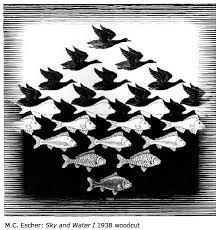Often it is stressed that we should be creative and search for alternative choices or possibilities. And seldom the interpretation of a phenomenon itself is subject to creative alternatives.

In history, politics and news we follow mostly the elucidation as given by experts, journalists or opinion leaders.
In organisations, we make “sense” of what is happening but we tend to act first, and then form our ideas and opinions based on our actions, rather than vice versa (see also The Social Psychology of Organizing by Carl Weick)
In everyday life we often interpret behavior as a result of, at least for us, an obvious cause. The diagnosis of the cause may be incorrect since we made an erroneous assumption. There is also a need to be creative in our interpretations of daily events and behavior at home.
Recently I came across an scientific article from 1971article called That’s Interesting! by Murray S. Davis. Although written in the context of what do make social theories interesting while others do not, it gives us some good hints to construct alternative explanations that challenge current assumptions. Those are tools to break current thinking patterns, routine patterns or the status-quo, ways to set up provocations by a figure-ground reversal.

This helps us to shift the focus of thought. It is like a painting by M.C. Escher, where we turn our assumptions around. What was white becomes black and vice versa. We turn the view upside down and search for new insights.
What seems to be a phenomenon that is …What in reality a phenomenon that is …. Is in reality a phenomenon that is … Seems to be a phenomenon that is……
Disorganized, unstructured Organized, structured
Composed of assorted heterogeneous elements Single
Individual Holistic
Local General
Stable, unchanging Unstable, changing
Ineffective Ef fEffective
Bad Good
Unrelated, independent Correlated, interdependent
Existing together Not existing together
Positive co-variation Negative co-variation
Similar, near identical Opposite
Independent Dependent
In one of our next posts we will give you some of the most striking examples how Reversal as a thinking strategy has led to scientific and other inventions.
However, using reversal as a creative thinking technique is not restricted to interpretations of daily life, the news, politics, history or organizational behavior.
It can also be applied for devising exciting stories. As an intellectual holiday task, we challenge you to send us a short story where you have used one of above mentioned reversals (in the comment box).
Happy Thinkibility!
